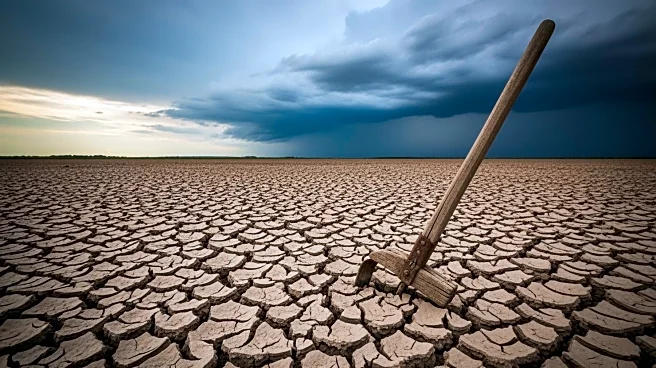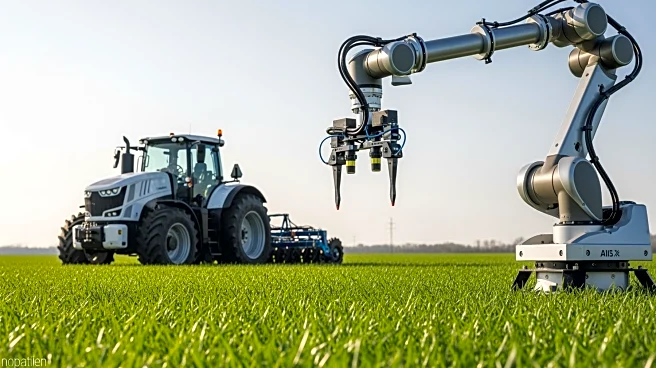What's Happening?
The Food and Agriculture Organization of the United Nations (FAO) has released a report detailing the significant impact of disasters on global agriculture, estimating losses of $3.26 trillion over the past
33 years. This equates to an annual average loss of $99 billion, representing approximately 4% of global agricultural GDP. The report, titled 'The Impact of Disasters on Agriculture and Food Security 2025,' provides a comprehensive assessment of how various disasters, including droughts, floods, pests, and marine heatwaves, are disrupting food production, livelihoods, and nutrition worldwide. Asia accounts for the largest share of these losses, totaling $1.53 trillion, due to its high exposure to floods, storms, and droughts. The Americas follow with $713 billion in losses, primarily driven by recurrent droughts and hurricanes. Africa, while recording lower absolute losses, suffers the highest proportional impacts, losing 7.4% of its agricultural GDP to disasters.
Why It's Important?
The report underscores the critical challenges faced by global agriculture due to natural disasters, highlighting the vulnerability of food systems and the need for enhanced resilience. The significant losses in agricultural output have severe implications for food security, particularly in regions where agriculture is a major source of employment and income. The FAO emphasizes the transformative role of digital technologies in shifting agrifood systems from reactive crisis management to proactive resilience-building. Innovations such as artificial intelligence, remote sensing, and mobile connectivity are enabling real-time insights and improving early warning systems, which are crucial for mitigating disaster impacts. The report calls for increased investments in digital infrastructure and literacy to ensure these technologies reach vulnerable populations, including smallholder farmers, women, and Indigenous communities.
What's Next?
The FAO report advocates for the integration of digital solutions into national agricultural policies and strategies to enhance disaster risk reduction. It calls on governments, international partners, and the private sector to advance digital innovation and support agrifood system transformation. The report stresses the importance of human-centered design in digital solutions to ensure inclusivity and accessibility. Additionally, the FAO highlights the need for capacity development and institutional strengthening to maximize the benefits of digital technologies in agriculture. The report suggests that scaling up digital infrastructure and literacy will be crucial for enabling innovation and influencing decision-making in disaster risk management.
Beyond the Headlines
The report highlights the often-overlooked impact of marine heatwaves on global fisheries, which have caused $6.6 billion in losses between 1985 and 2022. Despite supporting the livelihoods of 500 million people, losses in fisheries and aquaculture remain largely invisible in disaster assessments. The FAO stresses the need for comprehensive disaster assessments that include these sectors to better understand and mitigate their impacts. Furthermore, the report calls for a shift from reactive to proactive risk reduction strategies, emphasizing the potential of digital technologies to revolutionize agricultural disaster management.













